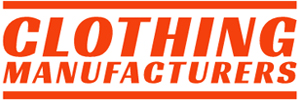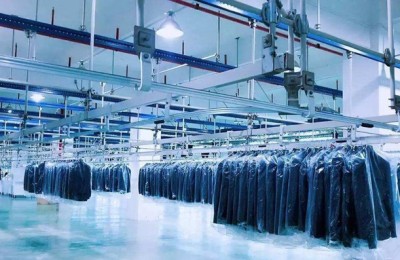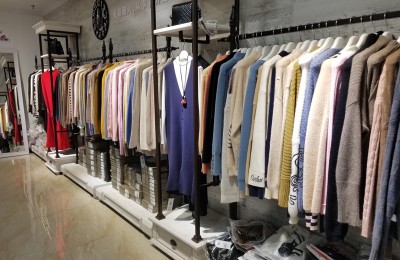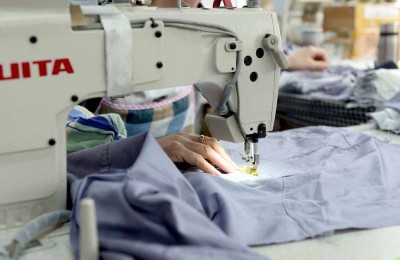Status and Countermeasures of New Harmful Textile Auxiliaries in Textiles
Status and Countermeasures of New Harmful Textile Auxiliaries in Textiles
After my country officially joined the World Trade Organization on December 10, 2001, European and American countries have further strengthened and accelerated the establishment of “green barriers”, especially as the textile trade quotas within the scope have been increased since January 1, 2005. After the cancellation, the textile market has undergone great changes. On the one hand, it is beneficial to the export of textiles and clothing from various countries, causing the textile exports of various countries to grow rapidly. On the other hand, many new factors and characteristics have also appeared in the market, forming 3 There are two key points that are very critical to the quality of textiles and clothing: (1) harmful chemical substances contained; (2) safety; (3) eco-labelling. To this end, the European Union and other countries continue to promulgate regulations and directives, and European civil organizations and sellers have also stipulated new harmful chemicals that are banned and restricted in textiles, especially new harmful textile auxiliaries, leading to competition in the textile market. more and more intense.
1New characteristics of the international textile market in the post-quota era
1.1 After the cancellation of textile quotas, the market has put forward stricter requirements for ecological and environmental protection
It can be seen from the directives and regulations promulgated by the European Union around January 1, 2005 that the market has put forward increasingly stringent requirements for textiles in terms of ecological and environmental protection restrictions and human safety and health. First, the European Union announced the formal implementation of Directive 2003/34/EC one month before the cancellation of textile quotas, stipulating that from December 1, 2004, the sale of 25 chemical substances and their products that are carcinogenic, mutagenic, and harmful to fertility will be banned; then in 2005 The formal implementation of Directive 2003/36/EC was announced on the eve of January 1, 2018. It is stipulated that from January 1, 2005, 43 types of chemical substances that are carcinogenic, mutagenic and harmful to fertility, as well as their products and applications, will be banned, and in
In January 2005, the formal implementation of Regulation 2003/53/EG was announced, stipulating that alkylphenol polyoxyethylene ethers (APEO) would be banned from the 17th of that month. Another three months later, the European Union clearly stipulated that DPT, dipropyltin, is a banned chemical substance, along with DBT (dibutyltin), TBT (tributyltin), TCyHT (tricyclohexyltin phosphate), TOT (trioctyltin), TPhT (Triphenyltin) and TPT (Tripropyltin) constitute a series of banned organotin compounds. In less than half a year before and after the cancellation of textile quotas, more than 70 new chemical substances were banned and restricted. If we make a rough statistics on the nearly three years before and after the cancellation of textile quotas, we can see more clearly that the European Union and other countries will promulgate a “green barrier” regulation in less than two months on average, and the content of setting up “green barriers” continues. In the initial stage of expansion, there were many banned and restricted textile dyes. In the past two years, the focus has been on banned and restricted new textile auxiliaries. So far, the cumulative number of banned and restricted textile dyes and textile auxiliaries has reached 25 categories and more than 2,000 varieties.
1.2 Textile trade has entered the era of ecological competition, and the market has put forward stronger requirements for textile quality
As the “green barriers” to textiles in the market within the scope become more and more severe, textile trade has entered an era of ecological competition. The traditional textile quality model, that is, technical quality (including printing and dyeing quality, fastness quality, fabric quality, etc.) model can no longer meet the needs of the market. New content must be added, that is, quality indicators of ecological performance. In addition, the value of textiles has also increased. The evaluation index of ecological performance makes the ecological performance of textiles something that must be examined in international trade. The requirements for this ecological performance are becoming more and more intense as the market puts forward more stringent requirements for ecological and environmental protection.
1.3 European and American countries have tightened restrictions on my country, and the market has put forward more stringent requirements for textiles
In addition to intensifying efforts to set up “technical barriers”, European and American countries have also set up a new level of “technical barriers” for my country’s textile and apparel exports since 2004 in order to cope with the new competition brought about by the cancellation of textile quotas and maintain the so-called domestic market order and textile employment. Round after round of new restrictive measures are introduced. The rounds of restrictions mainly occurred from 2004 to March 2005. They adopted the “special protection” regulations for my country’s textiles to set restrictions, used anti-dumping measures to set restrictions, raised import tariffs to set restrictions, and shifted the market protection effect of quotas to protection. Overseas investors have imposed restrictions on our country, and have imposed restrictions on our country in the name of combating infringement and counterfeiting. Since April 2005, European and American countries have begun a second round of restrictions, characterized by the United States and At the same time, the EU has imposed restrictions on my country, namely the United States has launched a “special safeguard” investigation and the EU has issued action guidelines for “special restrictions” measures, and has adopted more stringent measures such as initiating emergency special procedures for my country’s textiles. Although our country has signed agreements with European and American countries through negotiations on the scope of restrictions, time of restrictions, growth rate of textile imports, set bases, etc., they will also use disguised methods to prevent the export of my country’s textiles and clothing. , which not only puts forward increasingly stringent requirements for my country’s textiles and textile chemicals, but also poses a serious threat to their export and development.
1.4 The EU REACH regulations are about to come into effect, and the market has put forward more stringent requirements for textiles. The EU REACH regulations were announced on March 17, 2003, and are regarded as one of the most severe “technical and trade barriers” to date. It is a system for the registration, evaluation, licensing and restriction of chemicals that will replace more than 40 existing directives and regulations on chemicals in the EU; the regulations stipulate 42 detection methods for…Therefore, operators in the textile and textile auxiliary industries must further change their concepts from this height, update their concepts, establish the ideas of green production and green marketing, and make the production of textiles and textile auxiliaries more refined. Chemicalization, the textiles and textile auxiliaries produced are more green.
3.2 Collect information and keep up with the situation
In order to ensure that the detection of harmful chemical substances in my country’s textiles and textile auxiliaries is in sync with the international level, it is important to promptly collect and study the current technical restrictions, regulations and technical standards of various countries. In addition, it is necessary to study the toxic substances catalog proposed by relevant international organizations and the health and environmental protection departments of various countries to avoid being passive when countries suddenly set up “barriers” to certain substances into the 1:3 country.
3.3 Improve quality and innovate technology
The fundamental way to break down the “green barriers” is to improve product quality. my country’s production enterprises must actively adopt international standards to organize production, constantly track foreign advanced standards and advanced technological achievements, adopt new technologies and clean production processes, and constantly improve the quality indicators of my country’s textiles and textile auxiliaries. In view of the current situation, textile auxiliaries Production enterprises should provide textile printing and dyeing enterprises with a commitment letter that does not contain harmful textile auxiliaries (according to customer requirements) to meet the actual needs of domestic and foreign markets.
3.4 Strengthen testing and integrate with international standards
At present, what enterprises need is basic data on textiles and textile auxiliaries. Enterprises generally reflect the need to improve my country’s testing technology as soon as possible and strive to mutually recognize testing data with the international market, especially the EU.
3.5 Strengthen reform and expand exports
The accelerated establishment of “green barriers” in the international market is a blow to the textile industry and textile auxiliary industry in various countries. It has caused a significant increase in production costs and caused some enterprises to reduce output or transfer productivity outwards. However, it has also increased the introduction of foreign investment and technology into our country. Expanding export opportunities will also help to optimize and reorganize my country’s related industries, survive the fittest, and form a group of enterprise groups led by superior export products to expand and strengthen my country’s textile and textile auxiliary industries.
3.6 Develop new products and replace them
It is extremely urgent for my country’s textile auxiliary industry to vigorously develop environmentally friendly textile auxiliaries to replace harmful corresponding products. At present, my country’s textile auxiliary manufacturers have developed and produced many new environmentally friendly auxiliaries, such as scouring agent ZS-95, hydrogen peroxide stabilizer GJ-201, alkyl polyglycoside auxiliaries, and biological enzyme preparations ZS- 200, fixing agent DUR, fixing agent SH-96, low-temperature cross-linking agent LE-780, pigment printing adhesive CS, thickener KG201, no-iron finishing agent SDP, modified citric acid, chitosan antibacterial Anti-fungal products, etc., but they need to be further stabilized and improved. At present, dyes and auxiliaries for green textiles in the international market have become the mainstream and focus of the research and development of textile chemicals. Keep abreast of the development trends and new results of green textile auxiliaries in the international market, constantly promote their own development level and progress, and It is regarded as the main technological progress content for enterprises to survive and participate in market competition, so that they can take the initiative and win in domestic and foreign markets. ZToUOCJ4
Disclaimer:
Disclaimer: Some of the texts, pictures, audios, and videos of some articles published on this site are from the Internet and do not represent the views of this site. The copyrights belong to the original authors. If you find that the information reproduced on this website infringes upon your rights, please contact us and we will change or delete it as soon as possible.
AA




